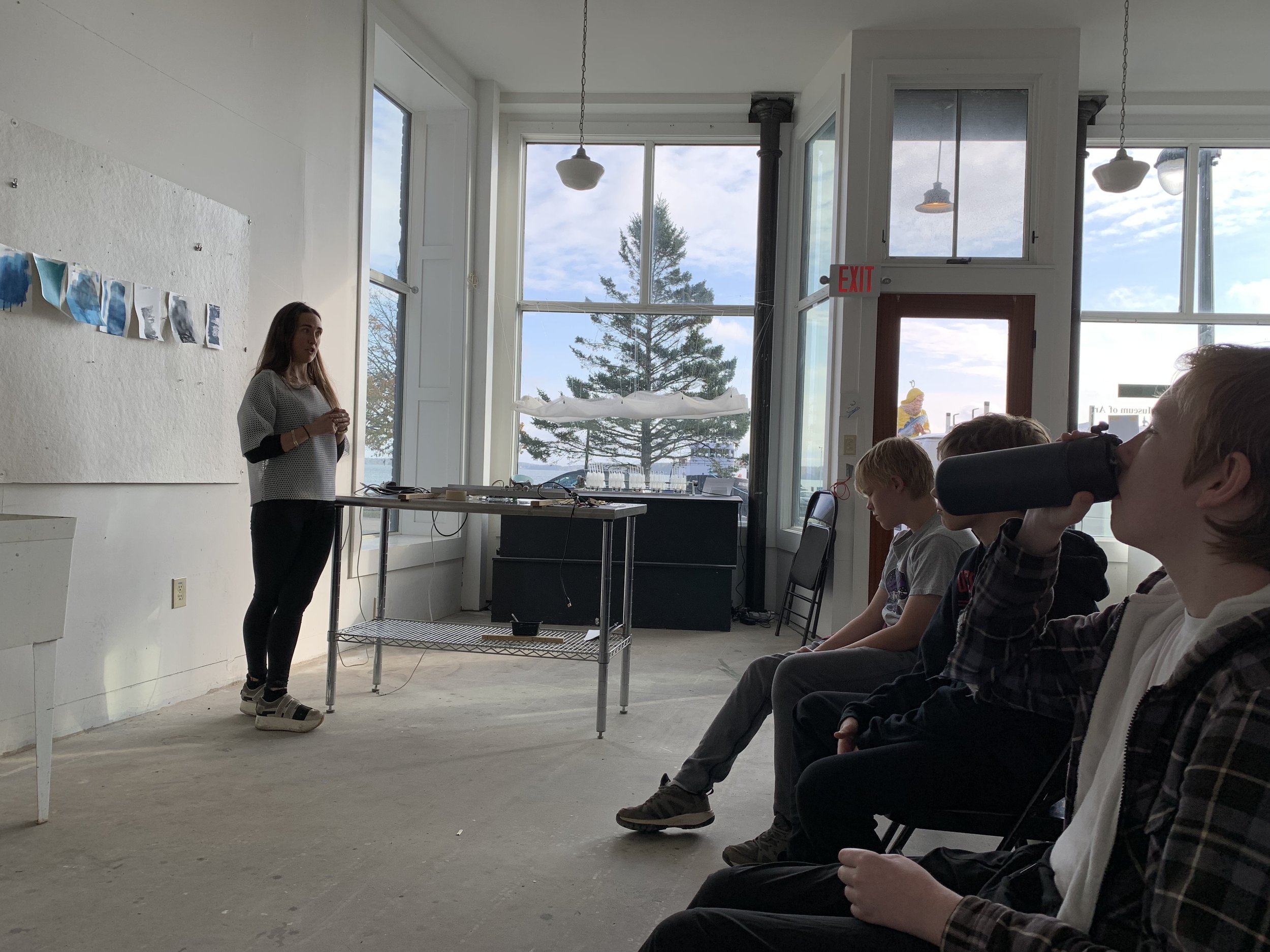This video relates to image file uploads number 7 and 8 that were taken from a month long residency at Tides Institute and Museum of Art, Eastport, Maine
Project Description:
1 month long residency at Tides Institute and Museum of Art, Maine, USA. The Bay of Fundy, home to the largest tides in the world
Relevant Partners:
Tides Institute and Museum of Art, East Port Coast Guard, East Port High School, NOAA Station
Impact of the Work:
This experience taught me the importance of working with new communities of all ages. Eastport has suffered a huge unemployment
Relevancy for this fellowship:
highlights ability to be immersed in a new city and community. My ability to engage with locals, facilitate workshops
Why relevant to this Challenge:
This residency was however only 1 month long so I have much larger aims for this 14 month long programme at Viana do Castelo. This project highlights my ability to thrive in a new city and community. It shows how I can collaborate with partners and engage with locals, to facilitate workshops that inspire and educate people using art and technology.
Located in the Bay of Fundy, where the largest tides in the world occur, Eastport has experienced high unemployment rates and economic downturn as a result of port and boatyard closures. I was struck by the sad and forgotten shipyards and canning factories, which I was told were once full of life and hives of activity. I also worked on an installation in Chatham (Kent, UK), where a similar situation saw 7,000 boat handlers lose their jobs overnight. Currently, Viana do Castelo is at the forefront in blue biotechnology but if not developed in collaboration with more traditional workers the city is at risk of overexploitation both the ecological environment and human culture.
Witnessing firsthand the profound impact of port and boatyard closures on local communities has fueled my passion to work on this challenge in Viana do Castelo, a project that underscores the critical importance of collectively and responsibly developing new technologies to keep up with global trade, fostering sustainable growth and resilience within the community.
As part of my residency in Eastport, I hosted a series of hands-on workshops that introduced students to making data tangible through the use of physical computing components such as arduino boards and motors. We looked at existing tidal data available online made available by the NOAA station located just outside my studio and also created our own data sets by going down to the harbour and measuring the water level and different times with my depth transducer. This engaging activity sparked dialogue about the strength of nature, the tides and how they have had such a profound impact on their community.
We used this data to first paint the tides with motors and paint rollers. And then in the following workshop we used the data sets to train a very basic model to predict the future tides. This was a good example because we could assess how good the model is against forecasted tides already available. Then with our three sets of tides we connected them to arduino boards and motors in a similar way to baragraphs (that can be seen in the video). These workshops created much excitement in the students at the potential to merge technology, science and art together which I enjoy so much
Image of me hosting a workshop in Eastport, where we went out and measured water levels with a depth transducer to compile our own dataset
